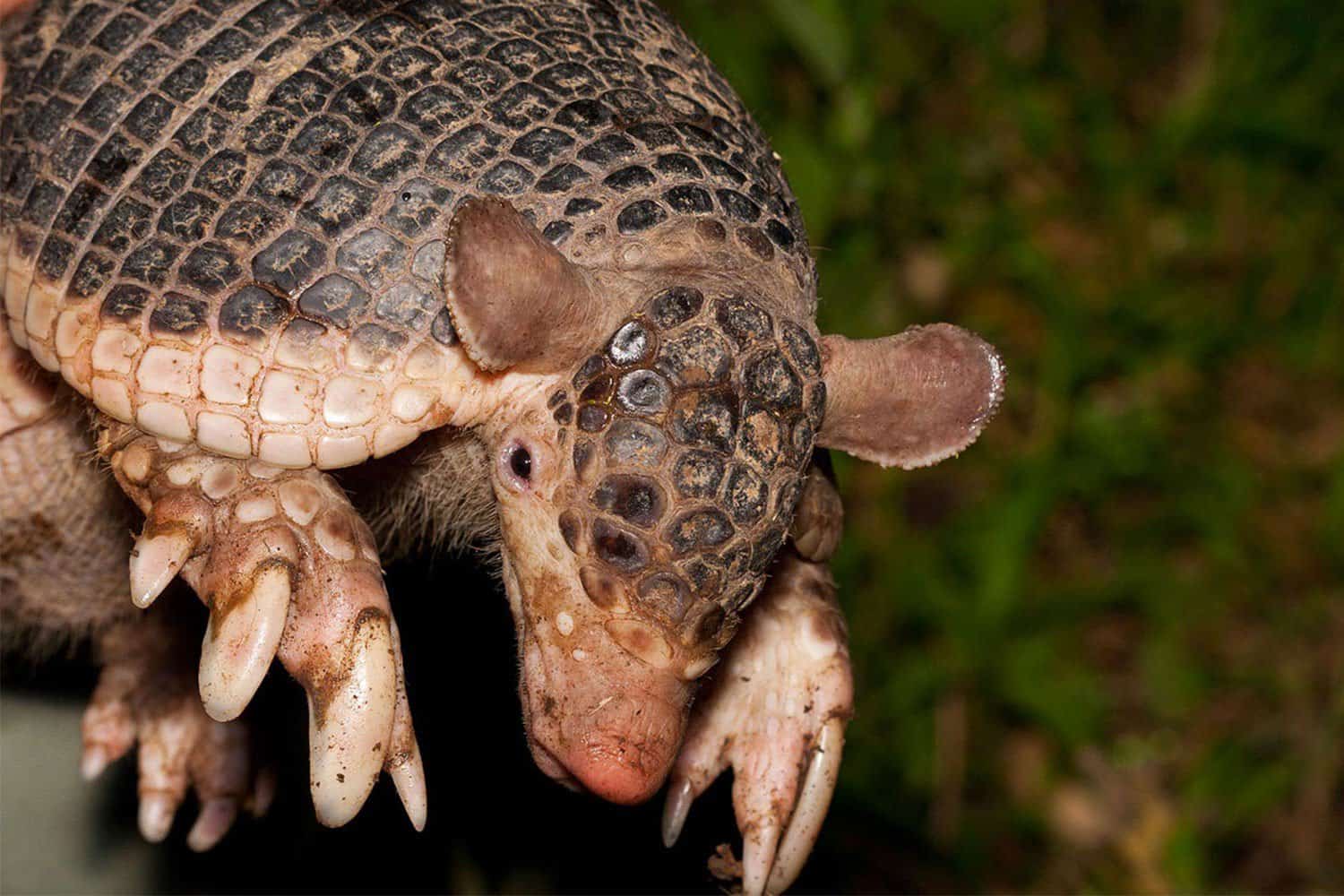Today we meet the northern naked-tailed armadillo. It’s a stinky little armored animal that lives underground, dines on insects, and nobody really knows anything else about it!
The northern naked-tailed armadillo (Cabassous centralis) is also known as the eleven-banded armadillo even though the number of moveable bands around the middle of its body varies from 10 to 13 bands. So stick with the first name. In Tico Spanish, it’s known as the armadillo zopilote which translates to vulture armadillo in English. I’ve come across two reasons why something that looks nothing like a vulture none the less carries its name.
The first being – it stinks. These armadillos have an anal gland that produces a pungent musky odor which could remind some of the aggressively smelly foods consumed by vultures or all sorts. The second, mythology. The Bribri indigenous people of southern Costa Rica consider both the northern naked-tailed armadillo and the vulture harbingers of death, and the animal earned its Spanish named based on these indigenous beliefs. Both explanations for the unusual name make sense in their own way.
The range of this armored beast starts in southern Mexico, covers all of Central America, and drops down into the top of South America. It’s one of two species of armadillo to call Costa Rica home, with the other being our friend the nine-banded armadillo. An interesting fact that I learned while researching this article is that those two species are the only of the 20 currently existing armadillo species to live outside of South America.
Even though the range map indicates that they live throughout almost all of Costa Rica and the literature says that they are able live in dry forests, wet forests, and even land effected by agriculture, northern naked-tailed armadillos are rare throughout their range. Their diet may influence their rarity.
Ants and termites make up 90% or more of their diet, and studies of animals with a similar reliance of this type of food, anteaters, have shown they require unusually large home ranges to acquire sufficient nutrition, so this could be a factor in their small population.
These armadillos are designed for a fossorial lifestyle. That is, they spend most of their time underground and they have adaptations for underground life. Their streamlined armored little bodies slide through underground tunnels and their greatly enlarged claws on their forefeet allow them to easily dig through the earth.
Since they’re generally rare and spend most of their lives underground, not a lot is known about them. They locate underground insects via smell. They give birth to one single tiny pink offspring at a time. And if you try to grab one, apparently it will urinate all over the place and fling feces around with its tail. There isn’t much more information out there than that. So, it’s definitely a candidate for further study.
I have never seen a northern naked-tailed armadillo in the wild and suspect that I never will. I have, however, recorded a handful of videos of them with my camera traps. Several years ago, on a private farm in the province of Limón I recorded what I was 90% sure was my first naked-tailed armadillo.
Having one video that isn’t a sure thing is no reason to brag to the world in the Tico Times about your naked-tailed armadillo recording abilities, so I waited. Well, last week I returned to Limón, on a different farm, and came back to find that I had 100% recorded 3 northern naked-tailed armadillo videos. So, look at me world! I record rare armadillo videos! Take a look at the video below.
About the Author
Vincent Losasso, founder of Guanacaste Wildlife Monitoring, is a biologist who works with camera traps throughout Costa Rica. Learn more about his projects on facebook or instagram. You can also email him at: vincent@guanacastewildlifemonitoring.com






